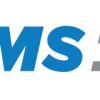Brian LaCroix and Charles Lick, MD, have worked together at Allina Health EMS for two decades. They credit their longstanding positive relationship to trust, respect, longevity and a track record of success. Their advice generated from a Paramedic Chief Q&A on EMS1.com could help other agencies develop and maintain smooth relationships between clinical and operational staff, optimizing EMS clinical care.
What is one issue that you think a lot of EMS organizations struggle with from an operations and clinical perspective?
Brian LaCroix: One of the issues that I am acutely aware that other agencies struggle with is finding medical direction for rural volunteers. In Minnesota, for example, there are 300 ambulance services. Six of these agencies do 80 percent of all the calls, which means there are a boatload of EMS agencies out there that are doing just a few hundred or a thousand calls a year.
Those smaller agencies often really struggle with finding a medical director. One of the things that I think would be of service to the nation would be helping smaller agencies develop relationships with medical directors.
What are some ideas for how small or rural agencies can find a medical director?
LaCroix: Historically, they might work with a family practice doctor in the community, who is just trying to help out. Often, they don’t really know what is expected of them, though. Often, a service can’t pay them so they offer other things like recognition.
Lick: In Minnesota, the EMS Regulatory Board reports to Department of Health, and they’ve come up with a medical directors’ course for new medical directors, which they offer for free at their annual conference. It can be a great way for people who just don’t have any background or experience in EMS to get some of the knowledge they need. And in our case, Allina Health EMS provides medical direction for a number of smaller, volunteer services and first responder agencies as well as a local community college paramedic/EMT program, which can be another model for smaller agencies.
Can you give some examples of when Allina Health puts operational efforts behind rolling out cutting edge EMS clinical care?
LaCroix: If there’s one thing I know about Charlie, it’s that when he is convinced of the efficacy of a clinical practice, he wants to get it on the street. Allina Health EMS is not the biggest ambulance company in the country, but we are pretty big, and we are geographically spread out. Over the years, we have given a lot of thought to how to roll out new clinical interventions. We know it’s not just a matter of the medical director making a decision to add a clinical piece of equipment; it involves thinking through all of the touchpoints that are involved in making it real on the street.
Rolling out new clinical interventions can also be an operational challenge. How do you handle this?
Lick: We have fine-tuned an educational process for rolling out new stuff. Many years ago, we started doing care improvement goals. We’d pick a care improvement goal and go after it. We have been systematic in how we’ve done that, rolled out new care goals, trained people, and given feedback in a very consistent fashion. I think that process has been part of that success. Our employees know what to expect, know what’s coming, they know they are getting feedback.
LaCroix: In some cases, we have introduced things in one service area to try it out. Other times, we have introduced things system-wide. We’ve just taken things on a case-by-case basis. We’ve also invested in some communications tools, which allow us to record short videos on educational information or about new equipment. We put those in an email and send it out to the 600 people in our system.
How do you handle any human resources concerns from a clinical and operational standpoint?
LaCroix: For the most part, we have a pretty firm firewall between our clinical and operational evaluation processes. On the medical side, if there is a person having clinical performance issues, that is dealt with using remediation, additional training and a connection with a clinical outreach person, who might be tasked with riding on shifts with that person. For the other side of it, things like I don’t show up to work on time, I am out of uniform, we have left that largely to the operations leaders to deal with from a performance management standpoint.
In my opinion, though, there are definitely times when it is appropriate for the medical director to be present for a conversation with a crew about performance. For example, if we get a complaint that a crew was rude or they didn’t explain things very well. I really thinking having a medical director sit down and talk to someone about their bedside manner can be really powerful.
How can EMS leaders build stronger relationships between operational leaders and the medical director?
LaCroix: I believe the key to strong relationships between the operational and clinical teams is frequent and open communication. At Allina Health EMS, we have worked hard to develop those open lines of communication. Although Charlie and I have a good working relationship, we don’t have all the answers.













